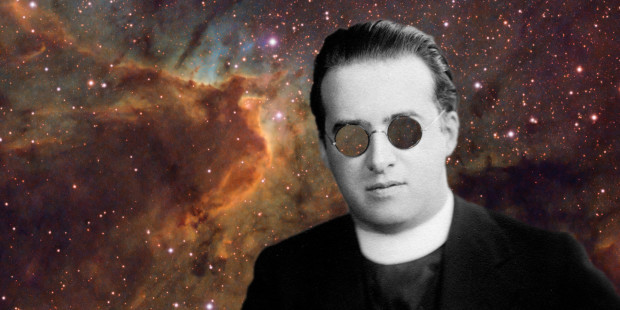VATICAN CITY — What happens if you fall into a Black Hole? What happened in the early Big Bang? What is the ultimate destiny of the cosmos?
These and other questions will be at the center of discussions at a scientific workshop on “Black Holes, Gravitational Waves and Space-Time Singularities” which will be held from May 9-12 at the Vatican Observatory in Castel Gandolfo.
At a press conference on Monday Brother Guy Consolmagno, SJ, Director of the Vatican Observatory, said that the 35 invited conference participants include are renowned scientists such as the 1999 Nobel Laureate in Physics, Gerald ‘t Hooft; 1988 Wolf Prize co-winner Roger Penrose; and cosmologists George Ellis, Renata Kallosh and Andrei Linde and Joe Silk.
One of the aims of this conference will be to encourage a fruitful interaction among participants from both theoretical and observational cosmology, and to create a suitable environment for the emergence of new ideas and research directions in contemporary cosmology, Consolmagno explained.
Read more:
Interview: On faith and science with Vatican Astronomer Br. Guy Consolmagno
In fact, he said, the recent detection of gravitational waves has opened up a new way of seeing the universe and has also stimulated new speculations about the true nature of the singularities of Space-Time (Black Holes are examples of Space-Time singularities).
Topics that the conference intends to explore are the limits of modern cosmology and the scientific challenges of the near future.
The Father of the Big Bang Theory
The Vatican conference will also celebrate the scientific legacy of Monsignor George Lemaître, 50 years after his death.
Lemaître was professor of physics at the Catholic University of Leuven and from 1960 to 1966 (the year of his death) he served as president of the Pontifical Academy of Sciences. A dedicated priest, he belonged to the Priestly Fraternity of Friends of Jesus, founded by Cardinal Mercier Bishop of Malines, who ordained him as a priest and promoted a renewal of priestly spirituality.
Lemaître was an outstanding cosmologist, nowadays considered one of the fathers of modern Big Bang theory. By the 1920s, astronomical observations of distant galaxies had revealed a mysterious recession motion whose origin was unknown; in 1927, Lemaître was the first to explain that this motion as the result of the expansion of the Universe, and not merely a peculiar motion of the observed objects. Lemaître obtained this result by solving the complicated equations of Einstein’s General Relativity Theory, at that time a very new idea which connects the mass-energy distribution of the Universe with the bending of the geometry of the Space-Time.
He became famous for his theory of the “primeval Atom,” known today as the Big Bang Theory. Through the cosmological solution he had worked out in 1927, he understood that, looking backwards in time, the Universe should have been originally in a state of high energy density, compressed into a point like an original atom from which everything started.
Asked at a press conference this morning about the relationship between science and faith in the Big Bang perspective, the director of the Vatican Observatory said that mathematical science should not be expected to prove the existence of God.
Reducing God to a mechanical force that would have triggered the Big Bang is irrelevant, Consolmagno said, since it thereby “reduces God to a natural God, like Jupiter throwing flashes of fire.”
Conversely, he said, we must consider that “every moment exists because God has willed it.”
The Vatican Observatory workshop is a modern legacy of Lemaître’s scientific intuitions. The conference has been organized with the support of INAF (the Italian National Institute for Astrophysics) and INFN (the Italian National Institute of Nuclear Physics).
More information about the workshop is available at:
http://www.vaticanobservatory.va/content/specolavaticana/en/workshop-lemaitre.html
Read more:
An astronomical leap of science & faith

